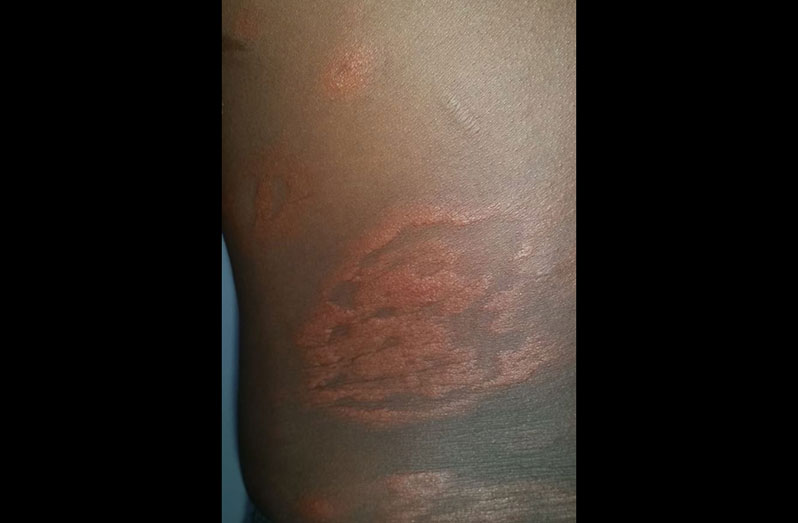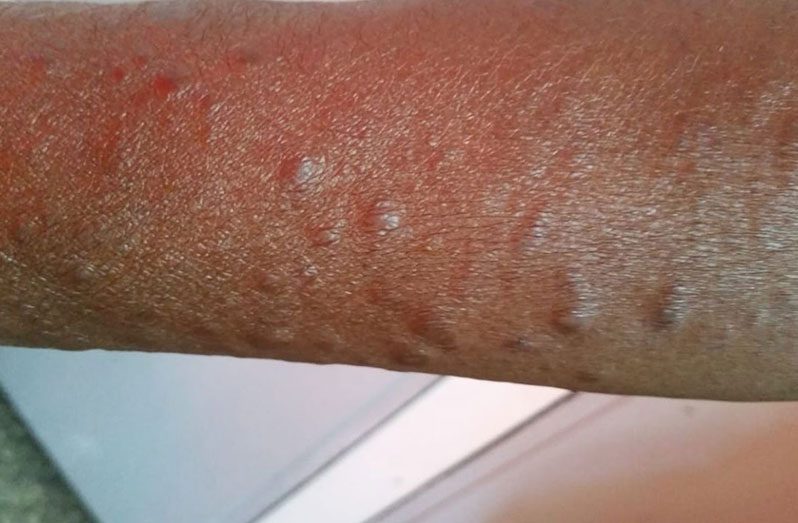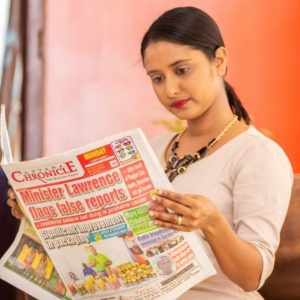WHEN Yadunauth Singh started to see unusual bumps coming out all over his body, he hadn’t a clue why. With no explanation being offered by doctors, he resorted to the idea that someone had “worked obeah” on him – a line of local thinking adopted by many who are presented with no reasonable or logical explanation for their suffering.
So he went to ‘pandit after pandit’ in his quest to find answers and did the full works – bathing at the riverside and everything else that was required in the process. But the bumps didn’t go away.
Out of nowhere, it seems, a more practical thought came to mind. Yadunauth, who was just about 37 years old at the time, decided that he would pay a visit to the ‘Skin Clinic’ located in the Palms Geriatric Home, Brickdam.
“I was going back and forth to the hospital and wasn’t getting any help. I was constantly given a prescription to buy Selsun Blue shampoo for anti-fungus and all these kinds of things. It wasn’t helping. At times people think about obeah and people ‘do’ you. All of that was running through my mind, so I went to this pandit and that pandit went to bathe at the riverside, and all these things,” Yadunauth, now 45, reflected in an interview with Pepperpot Magazine.
Once at the Skin Clinic, he was asked to do a test, which confirmed that he had Leprosy Disease. He enrolled at the Guyana Leprosy Control Clinic and started receiving treatment which would prove to be just what he needed.
“I was treated there for one full year. I took my medication on time every time. The treatment was awesome. I was tested again and was found to be Leprosy free. There are no more lesions on my skin, no marks, no spots.”
Living with the disease and at first, being uneducated about it was not a nice experience at all for Yadunauth. “It was spots like ringworms and bumps on my face, feet, shoulder, back, hands. I was wondering just what it was, and even the doctors didn’t know. I was stigmatized and discriminated against. People thought I had AIDS and all kinds of things,” he shared.

“I used to wear long sleeves shirts to go on the road and would most times opt to stay home because people would tend to drift away from me and shun me. I really felt that I was highly discriminated against, especially when it came to sitting next to someone,” Yadunauth further recalled.
He has made it a point to go on the internet and research the disease to educate himself on the subject. Having no family history of Leprosy, he still doesn’t understand how he got the disease in the first place.
But today, he is thankful that he got the treatment needed to help him. “My skin is clean as if I never had Leprosy before. I am normal again,” he expressed.
And as for those who treated him scornfully in the past and drew all sorts of conclusions about him without having the right information, Yadunauth said he tries to educate them now about the disease.
Meanwhile, doctors and the rest of the team at the Guyana Leprosy Control Clinic are going all out to help the public understand that Leprosy should no longer be thought of as an ancient disease but as one that is still very much affecting people today and more specifically, Guyanese. Last year, 32 cases of Leprosy were recorded, and of this, 24 were males, six were females, and two were children.
Sixty-one percent of last year’s cases had the severe form of Leprosy known as Multibacillary Leprosy and 19 percent had visible disabilities, meaning either clawing of fingers, shortened fingers or toes, drop foot, muscle-wasting, muscle weakness, decreased vision, chronic ulcers, etc. In 2020, 13 cases were recorded, 27 in 2019 and 50 in 2018. So far, for 2022, one new case has been detected.
The theme for World Leprosy Day 2022 (today, January 30) is “United for dignity,” and in keeping with it, the ‘Leprosy Clinic’ will seek to continue raising awareness of the disease. The annual health walk and World Leprosy Day ceremony will not be done this year due to the COVID-19 pandemic.




.jpg)










